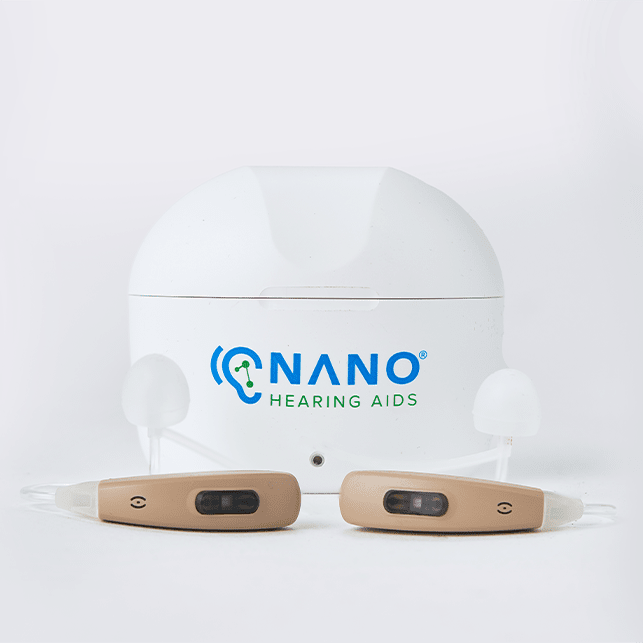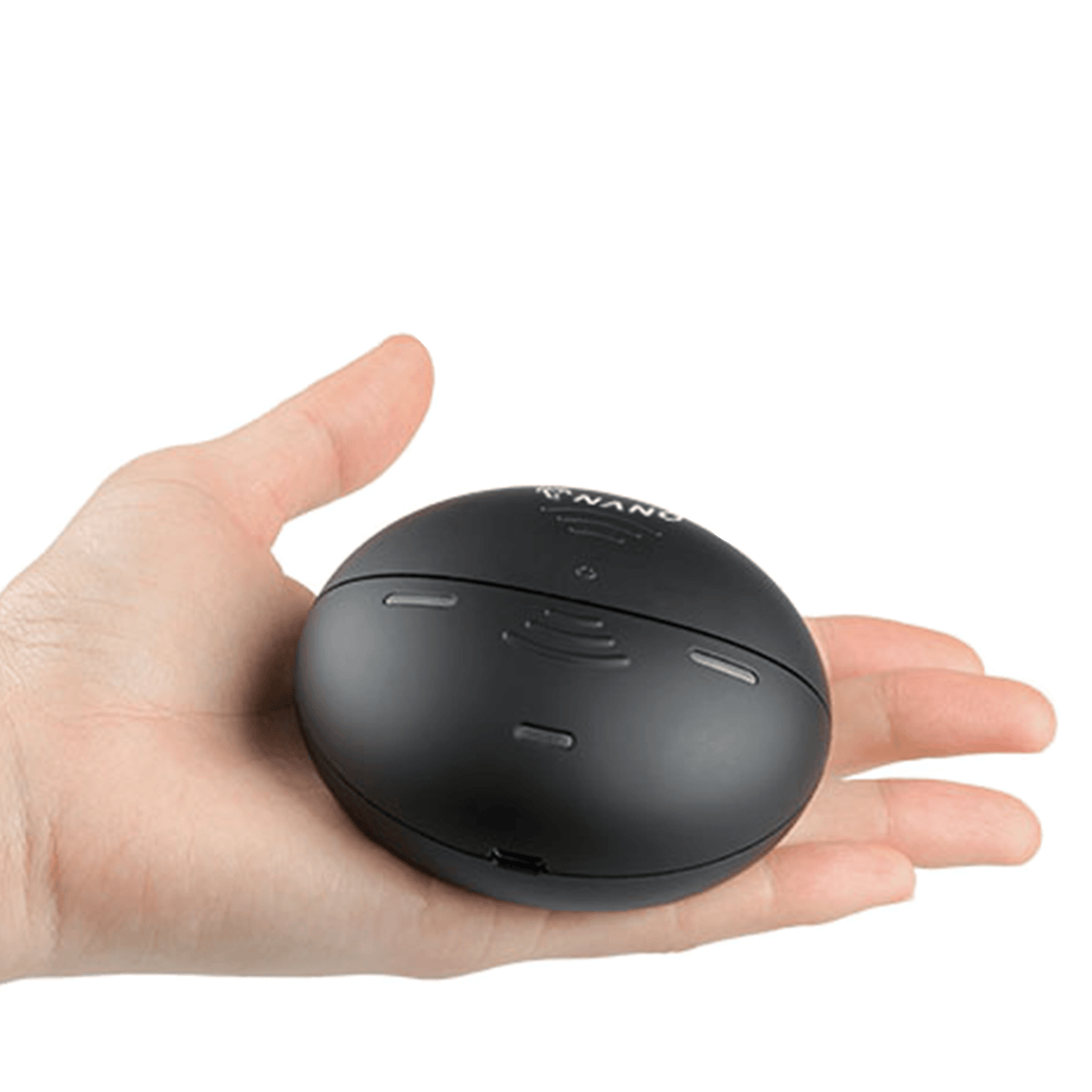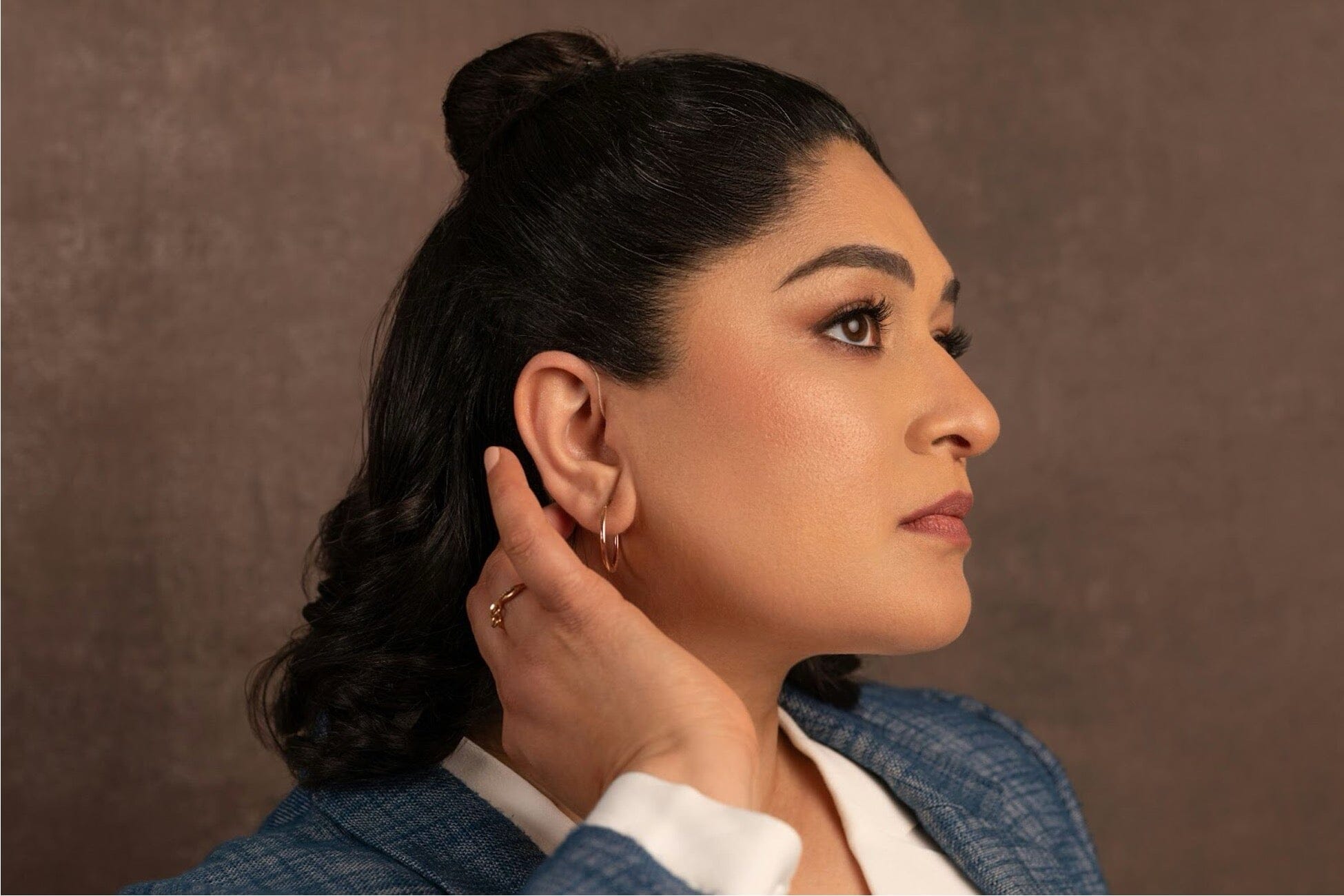Key Takeaways
- Hearing aid batteries come in four common sizes: 10, 312, 13, and 675.
- Disposable hearing aid batteries typically last between 3 to 10 days, depending on usage and battery size.
- Factors such as streaming, connectivity, and environmental conditions can impact battery life.
- Storing batteries properly and turning off hearing aids when not in use can extend battery lifespan.
- Nano's First Ear Pro BTE is a rechargeable hearing aid that eliminates the need for disposable batteries, offering a convenient and cost-effective solution.
Nano Hearing Aids
are FDA-registered, Class I devices. These OTC hearing aids are designed for individuals over 18 years of age with perceived mild to moderate hearing impairment. Nano won the Top ENT Solution Provider 2023, has 24/7 customer care, and has an affordable price compared to others.
Common Hearing Aid Battery Sizes
Size 10:
- Small, used in completely-in-canal (CIC) and invisible-in-canal (IIC) hearing aids.
- Marked with a yellow tab.
- Lasts 3 to 7 days.
Size 312:
- Common in in-the-ear (ITE) and some behind-the-ear (BTE) hearing aids.
- Brown tab.
- Lasts 3 to 10 days.
Size 13:
- Larger, often used in BTE hearing aids.
- Orange tab.
- Lasts 6 to 14 days.
Size 675:
- Largest, used in high-power BTE hearing aids and cochlear implants.
- Blue tab.
- Lasts 9 to 20 days.
Average Lifespan of Disposable Batteries
The lifespan of disposable hearing aid batteries varies based on several factors.
- Frequent use drains the battery faster.
- Features like noise reduction, Bluetooth connectivity, and streaming consume more power.
- Reputable brands offer longer-lasting batteries.
Factors Influencing Battery Life
Hearing Aid Model and Type
- Smaller devices like in-the-canal (ITC) or completely-in-canal (CIC) models often have shorter battery life due to smaller batteries.
- Larger models like behind-the-ear (BTE) hearing aids accommodate bigger batteries, which generally last longer.
Streaming and Connectivity Usage
- Frequent use of Bluetooth connectivity and streaming features can drain batteries faster.
Environmental Conditions
- Heat and cold can cause faster battery drain, while humidity may lead to corrosion.
Tips to Maximize Battery Lifespan
Store Batteries Properly
- Keep batteries in a cool, dry place, away from direct sunlight and extreme temperatures. (not the fridge though, as that can cause damage!)
- Keep batteries in their original packaging until ready to use and use the oldest batteries first as they can lose charge.
Turn Off When Not in Use
- Turn off your hearing aids when not using them, especially at night or during periods of inactivity.
- Most hearing aids have a power switch or a battery compartment door to disconnect the battery.
Regular Cleaning and Maintenance
- Keep your hearing aids and battery compartments clean to prevent clogs that reduce efficiency.
- Use a soft, dry cloth for regular cleaning.
- Avoid water or cleaning solutions that could damage hearing aids and batteries.
Rechargeable Hearing Aids
Maximize your hearing aid's battery life with Nano's portable charging case, designed for ease and convenience.
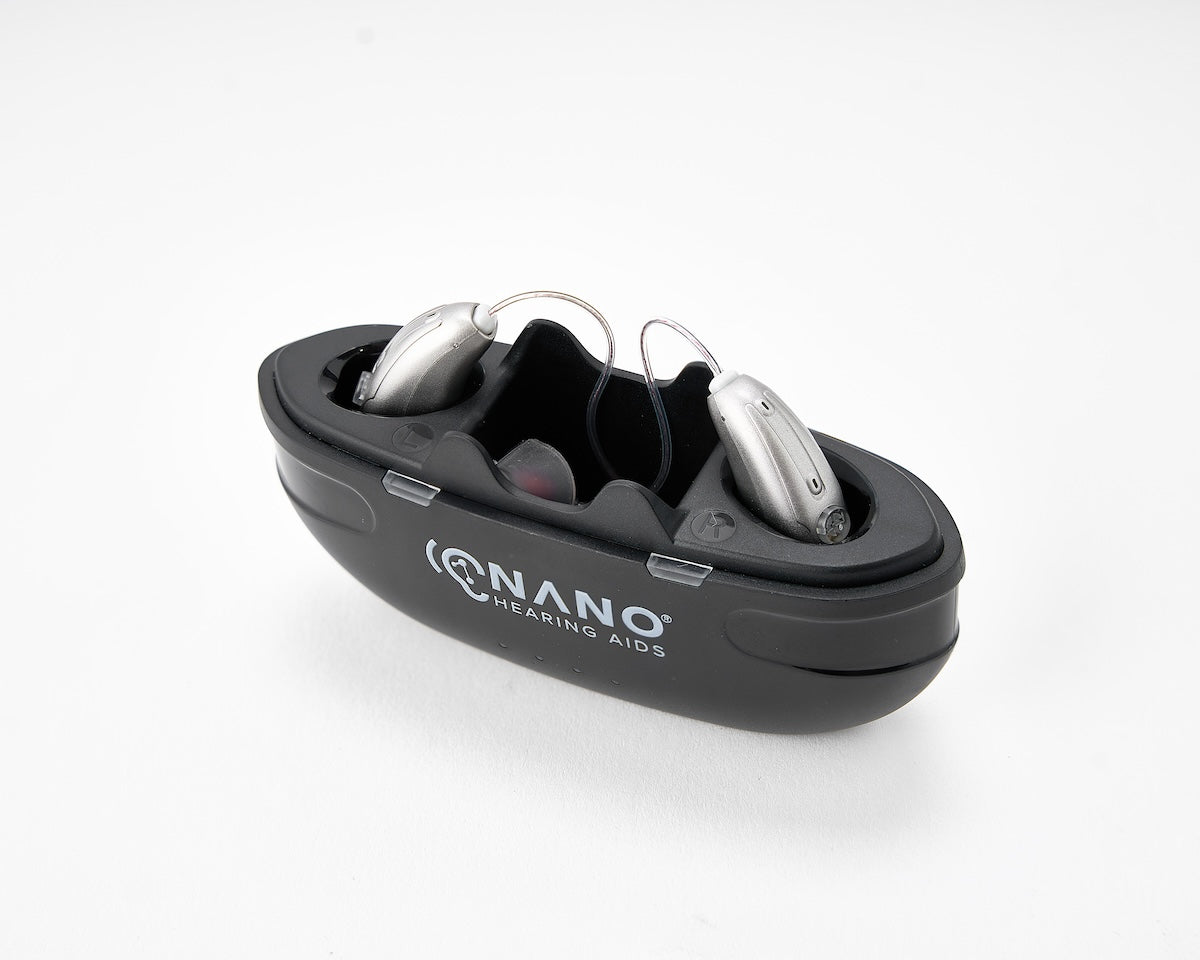
Benefits of Rechargeable Batteries
- Environmentally Friendly: Reduce battery waste in landfills.
- Cost-Effective: Save money over time by eliminating the need to purchase new batteries regularly.
- Convenience: No need to carry spare batteries.
How Long Rechargeable Batteries Last
The lifespan of rechargeable batteries varies by model and usage. On average, a full charge lasts between 20 to 30 hours.
Our First Ear Pro BTEmodel offers up to 20 hours of listening time with each charge, and the portable charging case provides up to 3 charges.
Charging Best Practices
- Charge overnight to ensure a full charge for the next day.
- Use the manufacturer-provided charger to avoid compatibility issues.
- Keep the charging station in a cool, dry place to prevent overheating.
How Nano Hearing Aids Can Help
The First Ear Pro BTE model comes with a compact charging case for up to 60 hours of listening time with 3 charges.
At Nano Hearing Aids, we offer a variety of FDA-registered, Class I hearing aids for perceived mild to moderate hearing loss.
Our First Ear Pro BTE model offers up to 20 hours of listening time with each charge and up to three charges with its portable charging case.
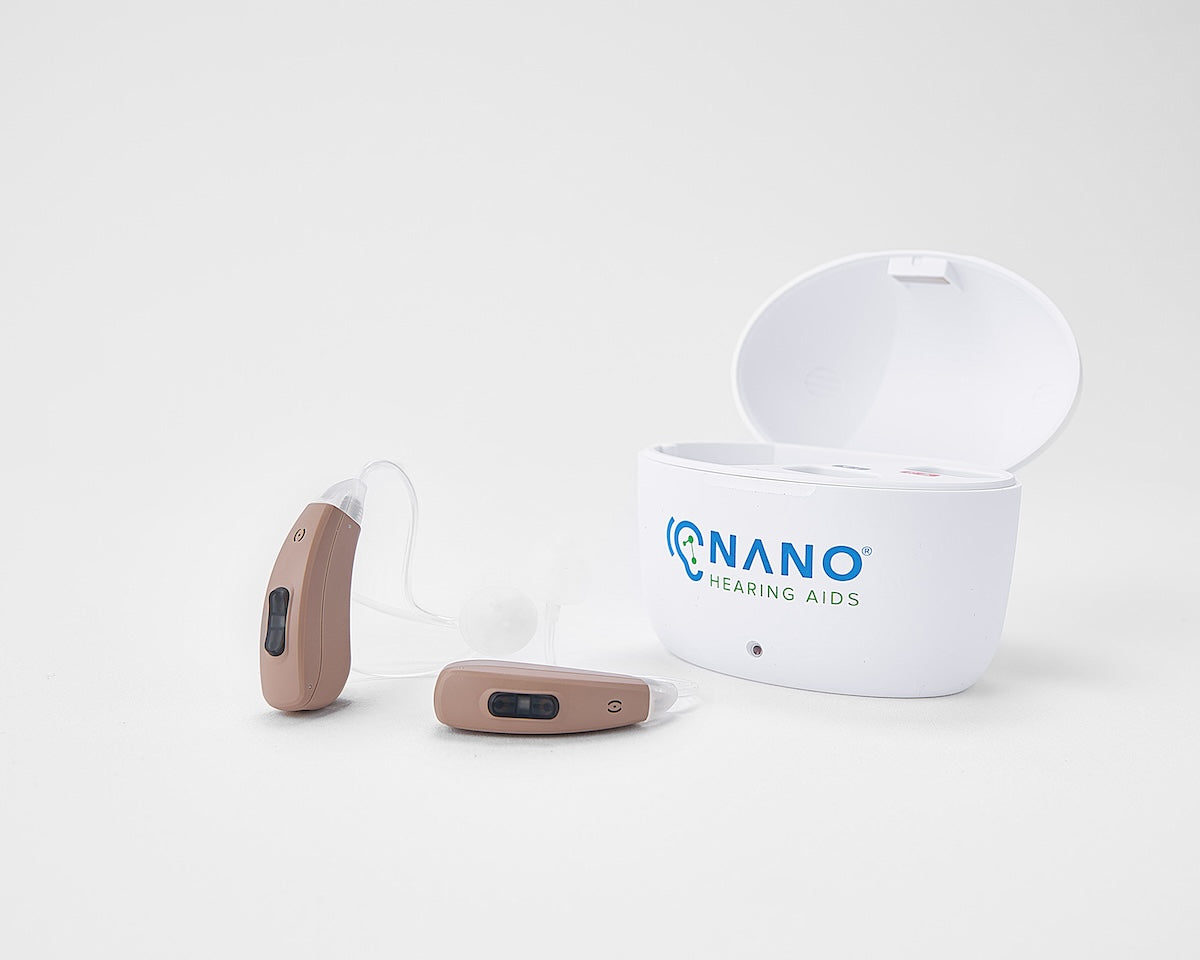
Frequently Asked Questions (FAQ)
How often should I replace my hearing aid batteries?
The frequency of replacement depends on the battery type and usage. On average, they need to be replaced every 3 to 10 days. All Nano hearing aids come with rechargeable batteries, so replacing batteries is not necessary.
What is the best way to store hearing aid batteries?
Store hearing aid batteries in a cool, dry place, away from direct sunlight and extreme temperatures. Avoid storing them in the refrigerator, as this can cause condensation and damage the battery.
Can I use any brand of battery in my hearing aid?
While different brands can be used, it’s best to stick with reputable brands known for quality and reliability to ensure optimal performance and longevity.
Are rechargeable hearing aids worth the investment?
Yes, rechargeable hearing aids, such as Nano Hearing Aids, are more cost-effective in the long run, plus they’re more convenient and eco-friendly.
How do I know when my hearing aid battery is low?
Most hearing aids have a low battery warning. Some models also have an app that notifies you when the battery is running low.
What should I do with old batteries?
Dispose of old batteries properly by taking them to a recycling center or a designated battery disposal site. Avoid throwing them in the trash, as this can be harmful to the environment.
Why should I choose Nano Hearing Aids?
Our hearing aids, like the First Ear Pro BTE, are rechargeable and offer up to 20 hours of listening time on a single charge—and the portable charging case gives you up to two additional charges. Our First Ear Pro BTE also has 4 listening programs and noise reduction and feedback management technology for clear sound.

